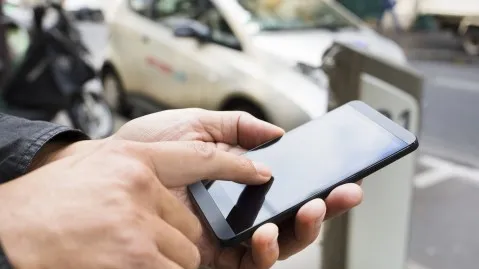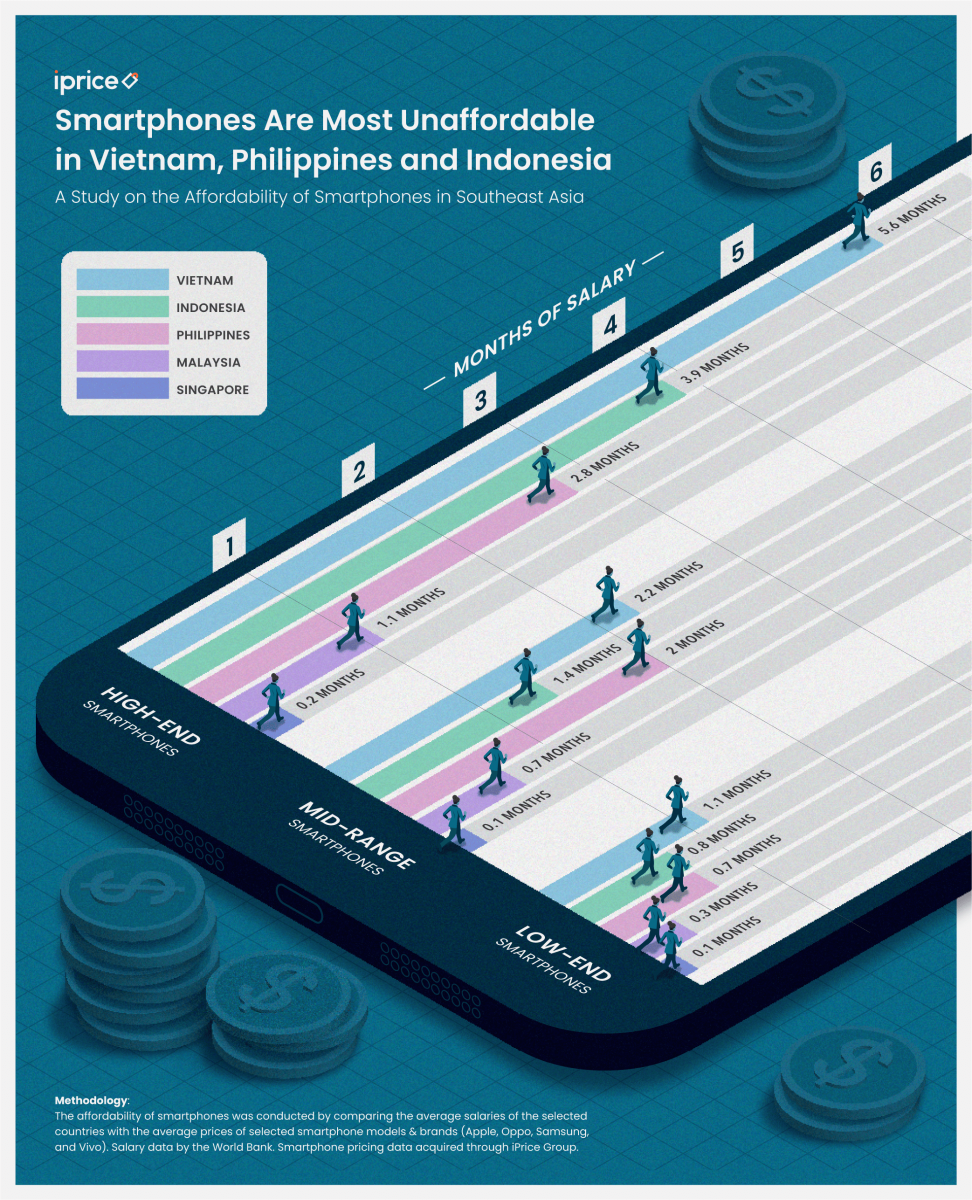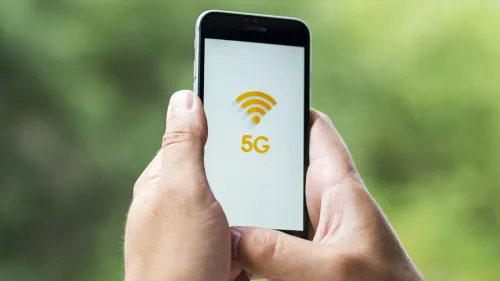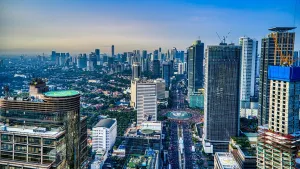
How affordable are smartphones in Southeast Asia
They are the least affordable for consumers in Vietnam, the Philippines and Indonesia.
Smartphones are deemed essential for Southeast Asian consumers, but affordability varies amongst five markets in the region, according to a study by iPrice Group.
In a statement, iPrice said smartphones were the least affordable for Vietnamese, Filipino and Indonesian consumers.
The average price for a mid-range smartphone is equivalent to two or more times the average monthly salary in Vietnam and the Philippines. In the “mobile-only” country Indonesia, the average price of new mid-range smartphones is over one time the average monthly salary.
Low-end smartphones were also expensive for Vietnamese, Filipino, and Indonesian consumers as these cost over 70% of their average monthly salary.
High-end models are “simply out of reach,” as prices of these were around three to six times their monthly salary.
Photo from iPrice Group.
On the other hand, smartphones are more affordable in Malaysia and Singapore, as entry-level smartphones there only cost a third of a month’s salary or less, and high-end smartphones only cost around a month’s salary or less.
The iPrice study also found that pricing offered by local online sellers for some brands differs significantly from the manufacturer's retail price (MRP) which has a considerable impact on affordability.
The report found that the latest iPhone models were consistently priced across the five markets, whilst the median prices offered for iPhone 13 by online sellers vary by only 10% between markets.
Prices for top-end models from Oppo, Vivo, and Samsung, meanwhile, vary around 50% between markets with Indonesia and the Philippines at the higher end. This is also similar when compared to smartphone models from 2021.
“Indeed, pricing on certain products seems counter-intuitive. Higher-end smartphones are often offered at higher prices in lower-income markets (Indonesia and the Philippines) compared to higher-income countries (Singapore and Malaysia). Based on our initial investigation, we can theorise this is caused by demand for such phones in these local markets outstripping supply,” iPrice said.
“Online sellers in these markets can offer high-end models at a significantly higher rate than the MRP to consumers who consider these smartphones a worthwhile if considerable investment,” it said.
IPrice added that the price differential seems to be worsening due to global supply chain issues due to the pandemic and the Russia-Ukraine conflict.
The study looked into iPrice’s catalogue of 7.5 billion offers from e-commerce marketplaces, sellers and brands and was compared to actual pricing from 250,000 smart listings. Salary data from the World Bank were used to assess affordability. It looked into the pricing of four major smartphone brands namely Apple, Samsung, Vivo, and Oppo.














